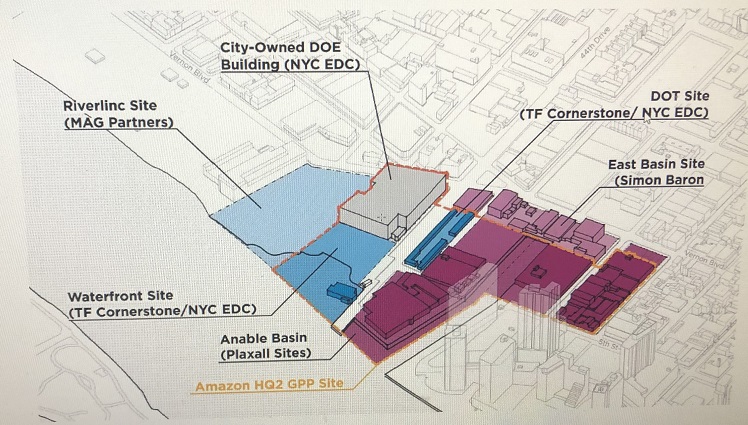
Rendering YourLIC
Sept. 4, 2020 By Christian Murray
A coalition of builders that are planning to build a 10-12 million square foot development on the Long Island City waterfront were dealt a major set back yesterday when the de Blasio administration backed out of the deal.
The plan, which involved four developers and incorporated a 28-acre area, included two city-owned lots on 44th Drive that were a central component of the project that was dubbed YourLIC. The city withdrew those lots from the plan after not being able to reach an agreement with the private developers over offsite infrastructure costs.
“We remain committed to Long Island City’s future as a thriving mixed use community,” said Mitch Schwartz, a spokesperson for the mayor in a statement.
“That means supporting proposals that properly account for the development’s critical infrastructure needs and impacts, like open space, transportation and water and sewer. After extensive discussions with YourLIC developers, we are disappointed that the proposed project does not deliver on those requirements.”
“This project must compliment the surrounding area and properly support the development’s residents, workers, and visitors. We’re going to hold private developers accountable to those goals. Queens deserves nothing less.”
The plan–put together by TF Cornerstone, Plaxall, Simon Baron Development and L&L MAG—included sites where Amazon HQ2 was slated to be built as well as some adjacent parcels.
The developers, after Amazon withdrew, came together and formed YourLIC after city officials called for them to produce a comprehensive plan for the area instead of coming up with separate plans for their respective sites.
The plan, revealed in May, called for approximately 15 buildings ranging in height from 30 to 60 stories, as well 7 acres of open space, space for three schools and ½ million square feet for arts and cultural space and similar uses.
Half of the space would be for commercial purposes, with the developers saying that it would lead to 26,000 jobs.

The two city-owned sites that have been withdrawn are in light blue (TF Cornerstone/NYC EDC) Rendering: YourLIC
Each real estate company owned land except for TF Cornerstone that was in charge of developing the two city-owned lots.
The mayor’s office said yesterday that it is committed to working with TF Cornerstone on the city-owned lots despite exiting the YourLIC deal.
“TF Cornerstone is and will continue to be our partner on the public sites. We look forward to working with them to identify the path forward,” Schwartz said.
There was enormous push back as to the fate of the city-owned parcels, with many people opposed to a private real estate company developing city owned land.
Many want the land to be set aside for exclusive public use, including Congresswoman Carolyn Maloney.
The news of the city’s withdrawal from YourLIC–first reported by Politico and Patch–came as a shock to members of Queens Community Board 2 last night who held their monthly meeting online.
Some board members anticipate that the developers will just amend the plans and move forward with the project. Several members also expressed concerned as to the fate of the public parcels despite the city’s withdrawal.
Plaxall, which is the largest stakeholder, did not say what its next steps would be but did make clear that it plans to develop the area.
“Our family has been part of this community for 75 years and continues to believe in a vision for our Anable Basin property that builds on LIC’s history as a center of innovation, provides workforce and job opportunities, mixed-income housing, and a public waterfront at the Basin,” said Plaxall managing director Paula Kirby.
“Our family remains committed to that vision. And we will continue to work hand in hand with the community toward creating a better future for LIC residents, Queens and New York City.”
2 Comments

The envelopes to City Hall must have been light the past few months
The continued economic success of new business coming to Long Island City is dependent upon not only additional transportation capacity, but capital improvements to sewer, water, electrical and utility assets as well. Municipal fire, police and sanitation services along with schools will also have to be expanded. What is the cost and who will pay for all these additional capital improvements and services?
(Larry Penner — transportation advocate, historian and writer who previously worked for the Federal Transit Administration Region 2 NY Office.)